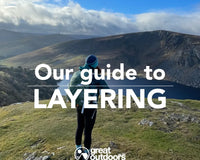The Intro To Outdoor Swimming

Introduction:
With the weather picking up and summer months on their way, you may be turning your mind to venturing into the open waters and training; maybe even for the very first time. Open water swimming holds numerous health benefits such as better sleep, better circulation, improved mental health, increased metabolism, and a boosted immune system. It also brings the chance to make the most of the great outdoors and experience nature in a way that you never have before. Open water swimming can be great for mental health as it’s relaxing and increases the production of positive hormones in the brain, and of course, it can be highly rewarding.
Gear
-
A Wetsuit
Swimming wetsuits are unlike other water sports wetsuits. Surfing wetsuits, for example, are designed to provide insulation and are made with thicker materials than swimming wetsuits; these are made with thinner materials, differing levels of buoyancy and have a much higher flexibility range, allowing for more freedom of movement. You’ll find it extremely challenging to swim for long durations in a surfing wetsuit, so here are some fantastic wetsuit suggestions for beginners:
The Advance wetsuit range is an entry-level wetsuit that features high-quality neoprene materials not often seen in wetsuits made for entry-level swimmers. With Free Flex lining on the underarms, this suit offers flexibility, buoyancy and energy conservation for swimmers making the transition from pools to open waters.
The vision wetsuit range is a step up from the advance and can also be used as a training suit for the more experienced triathlete. It is known as being the fastest entry-level wetsuit on the market. The Vision takes inspiration from other ZONE3 wetsuits designed for professional swimmers; it is made to reduce drag in the water, provide great flexibility, and reach throughout the torso and aids in saving time and energy whilst reducing fatigue. The rear panel is also highly reflective – an excellent safety feature for being easily visible in open water, especially on solo swims in the sea.
Other items you’ll need for open water swimming include:
-
Goggles
A good pair of goggles are fundamental for open water swimming as you’ll want to protect your eyes in the water and be able to swim without risk of fogged up lenses. Some goggles are only suitable for pool swimming and won’t offer much protection in open waters; you’ll need to bear this in mind when goggle shopping.
Designed to be flexible, these goggles conform to a wide array of face and head shapes. They feature curved lenses for enhanced vision, polarized and photochromatic anti-fog treated lenses and a flexible soft silicone frame.
-
Safety Accessories
Keeping safe in the water is obviously incredibly important, which is why ZONE3 have produced several products designed to keep you safe, seen and comfortable in the water.
Items such as the Swim Safety Buoy/Hydration Control or the Swim Safety Belt with Tow Float Pouch are fundamental for keeping afloat in the water. Features such as pockets to keep items in and in neon colourway choices to ensure you can be spotted by other swimmers and those on shore, make this product particularly attractive. Safety floats are advised for beginners, as having this device with you can put your mind at ease and allow you to enjoy your time in the water.
-
Silicone Swim Caps
Bright swim caps are recommended and advised by swim safety experts, and the ZONE3 swim caps are durable, comfortable, and lightweight.
-
Other accessories
For comfort, you may want to invest in other accessories such as a waterproof swim bag, spare towels, or a fleece-lined parka robe to keep warm after swimming.
To avoid the cold or briskness of open waters, you might want to try ZONE3’s neoprene accessories such as the Neoprene Swim Cap, Neoprene caps & socks which are created to provide and maintain insulation to keep your extremities warm. The key differences between pool swimming and open water swimming is the lack of ability to push off of walls and not having swim lanes to guide you in the right direction, as well as not being able to touch the bottom. These are all differences that, with time, you can learn to adjust to. You can adjust to the differences by adapting the following techniques:
Techniques
-
Sighting
As aforementioned, open waters don’t offer swim lanes or lane lines guiding you in the right direction. To be able to guide yourself in the open water, you’ll need to learn how to sight. This means practising looking ahead during your swim to find a ‘marker’ in the distance to guide you; this could be a tree or a small landmark which you’d then use as guidance on where to swim to. You can practise this in a pool by focusing on a spot on the wall at the end of the lane that you’re in and focusing on that spot only. Another way to train in a pool for open water swimming is to try and swim in a straight line as much as possible. In open water triathlons, you’re bound to veer left or right and bump into other triathletes, so getting this accurate in the pool whilst you can is a good idea. If practising this for the first time in open waters, swim close to the shoreline until you’ve got it right and then go further into the water.
-
Treading water
There are no walls to kick off of or swim to in open water. You’ll probably find yourself treading water a lot when in a lake, or the sea, so it’s advisable to practise treading water in the deep end of the swimming pool.
-
Turning
Open water events often require participants to turn around a water buoy, sometimes more than once in a race. Once confident, you’ll be able to train for this in open water, but until then, it’s a good idea to try this in a pool as well – if you have space. When practising this in a pool, ensure you’re not touching walls or the bottom of the swimming pool. In open water, practise this by swimming around water buoys, if safe to do so. If you’re swimming with a friend, you can use each other as markers to swim around
-
Breathing
In open waters, breathing on alternative sides is the most suggested breathing technique. It likely won’t feel natural to begin with, so practising this in a pool is the best bet. It’s recommended that you learn how to breathe away from the direction of the waves to reduce water intake. If bilaterally breathing, rotate your head and spine with your shoulders, breathe in and then turn your face along with your next shoulder rotation. Essentially, the easiest way to breathe in open water is to inhale through your mouth and exhale when your head is submerged without breathing to the side. Do whatever feels most natural to you and what you’re most confident with. It’s a good idea to try a range of various techniques during training and recognise that when you’re swimming at different speeds and intensities, your preferred breathing technique will change to accommodate that.
-
Swim Technique
In open water, you’ll need a stroke with a slightly higher stroke rate than in the pool. This helps you keep momentum if you’re in choppy waters. Most open water swimmers opt for the front crawl, so it’s a good idea to make sure you’re familiar with this stroke and can maintain it for longer periods of time. You need to be comfortable with whatever strokes you choose. It’s advised that you get used to other techniques, such as breaststroke, as this uses less energy than front crawl and you may find yourself in a situation where all you can manage at that time is a breaststroke.






